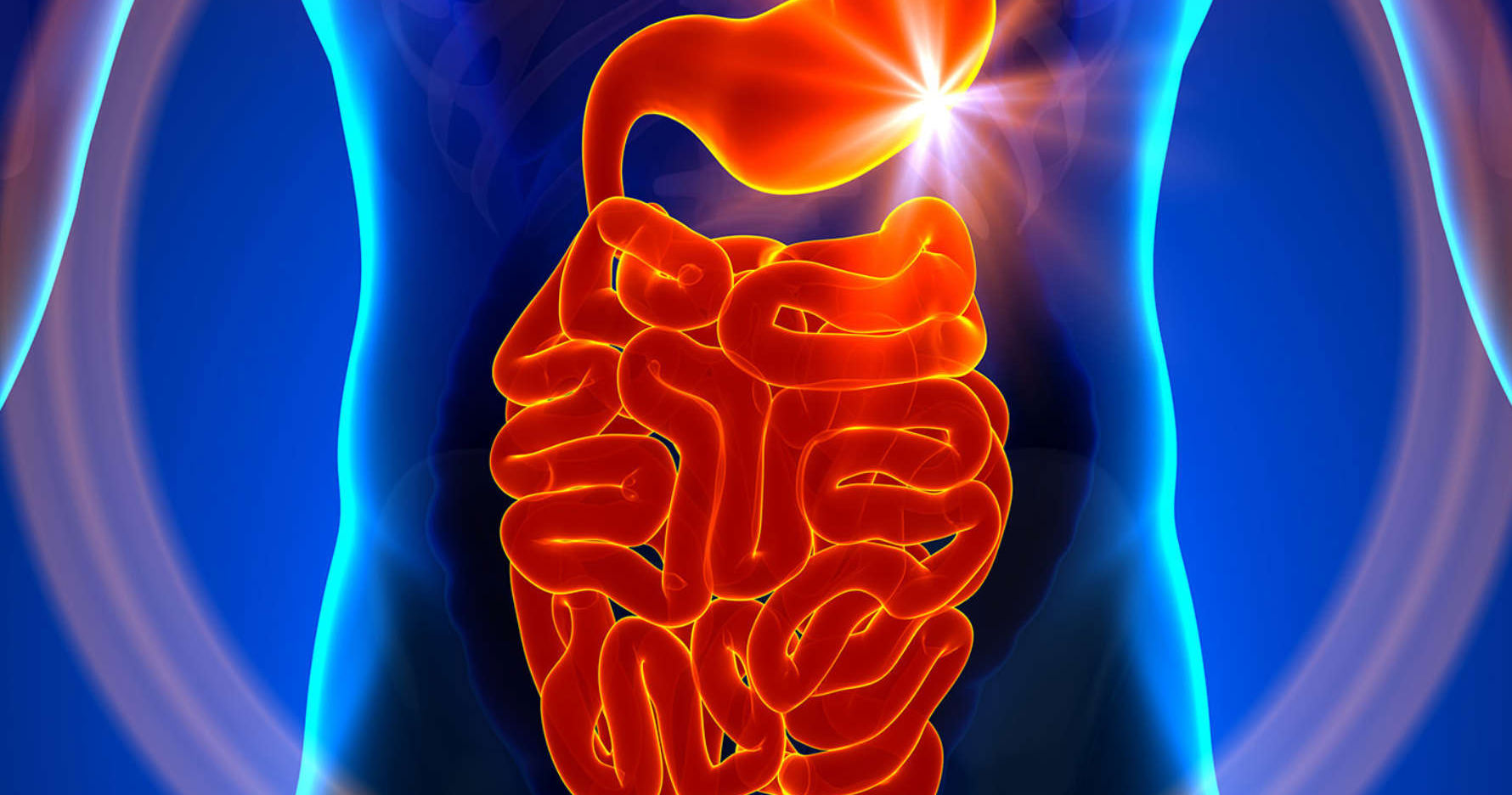Sports nutrition works – if your stomach and intestines are trained for it.

It has been known for decades that carbohydrate ingestion is crucial for endurance performance. There is even a direct association between the ingested amount of carbohydrates and the extent to which intake of carbohydrates actually improves performance. However, 'the more the better' does not apply. For maximum efforts that take 1 to 2 ½ hours, more than 60 grams of carbohydrates per hour will have no additional benefit. For longer efforts, the upper limit is 90 grams. Those who consume less carbohydrates lose some of the potential benefits.
Many endurance athletes, even on a professional level, fail to consume these optimal doses. During cycling it usually still works reasonably well because of the ease with which you can eat and drink on a bike. But during running it is more difficult, the stomach contents are continuously shaken, so that food and drinks stay in the stomach longer. Many endurance athletes also suffer from stomach / bowel problems such as acid reflux, bloating, diarrhoea, flatulence, vomiting, or intestinal cramps. Therefore, a compromise must always be sought between taking sufficient carbohydrates (60 to 90 grams per hour) and minimizing the risk of gastrointestinal problems.
That compromise starts with drawing up a personal nutritional plan. How you take the dose of carbohydrates does not really matter for your performance. It does not matter whether you do it through an isotonic sports or energy drink, or via gels, or via energy bars and other solid food, or any combination of these products. Only the dose counts, and good gastrointestinal comfort during your training or competition. A 30 gram dose of carbohydrates corresponds approximately to 1 bottle (500 ml) isotonic sports drink or 250 ml energy drink, 1 gel or 1 energy bar, but equally good for example are two slices of gingerbread or 1 large ripe banana (no green ones!).
However, do not forget that in addition to carbohydrates, you also need to take in water and salt (sodium), and certainly during exercise in the heat, but that is a different story. If you work with gels or bars, or other solid food, you will definitely need to include extra water.
It is very important that you also train with your personal nutrition plan. Only then can your stomach and intestines get used to it. Therefore, using sports nutrition only in competition, and not in training, is asking for problems. 'Eating athletes' who take part in eating competitions (for example eating as many Big Macs as possible in one hour), train their stomach to be able to put in as much food as possible in as short a time as possible, much more than a normal person ever could. This is of course not 100% comparable to the nutrition plan of the endurance athlete. But, this indicates that your stomach and your intestines are indeed trainable! You can teach them to absorb fluid and sugars faster. So, you not only have to make up your nutrition plan, you also have to train with it, with an almost certain improvement of your stomach / intestinal comfort.
How do you actually do that? For example, walking or cycling with a well-filled stomach can be trained by occasionally drinking (excessively) large amounts of water during training, or by eating just before your workout. This way your stomach learns to empty itself better in the small intestine where the sugars can then be absorbed into the blood. For example, to train your intestines to absorb sugars more efficiently, include an endurance training session in which you test your integral competition plan (60 to 90 grams of carbohydrates per hour). Remember, you can also try this in competitions of less importance.
How often should you train your nutrition plan? There are actually no clear scientific guidelines for this just yet. Hence the instructions are based more on experience. One endurance training per week in which you carefully apply your nutrition plan, and doing this for 1 to 2 months usually seems to 'work' to improve gastrointestinal comfort.
In short: create a nutrition plan, and use it to train your stomach and intestines regularly. But there is nothing to prevent you from regularly adjusting your nutrition plan in the search for even more stomach / intestinal comfort. Or even applying the plan flexibly during a game, depending on your stomach / intestinal feeling. After all, stress and fluid loss in the heat can be an obstacle. Whatever the organiser offers free of charge when supplying, it is always better to use your own carbohydrate-rich products according to your own plan.
Jeukendrup AE Training the gut for athletes. Sports Medicine.


